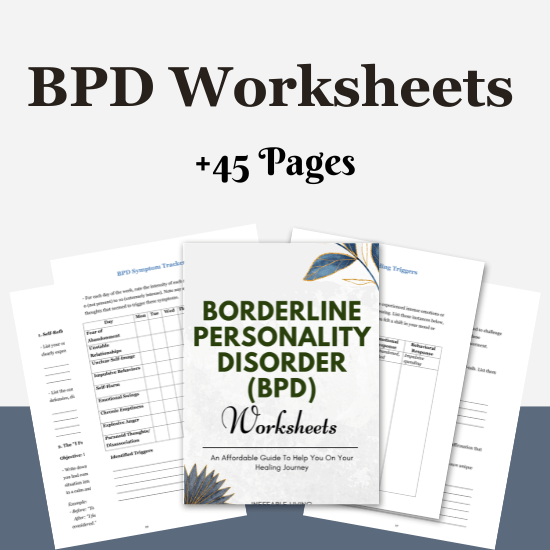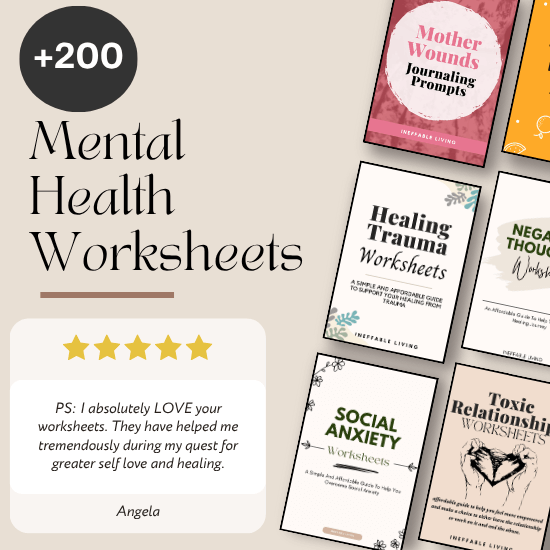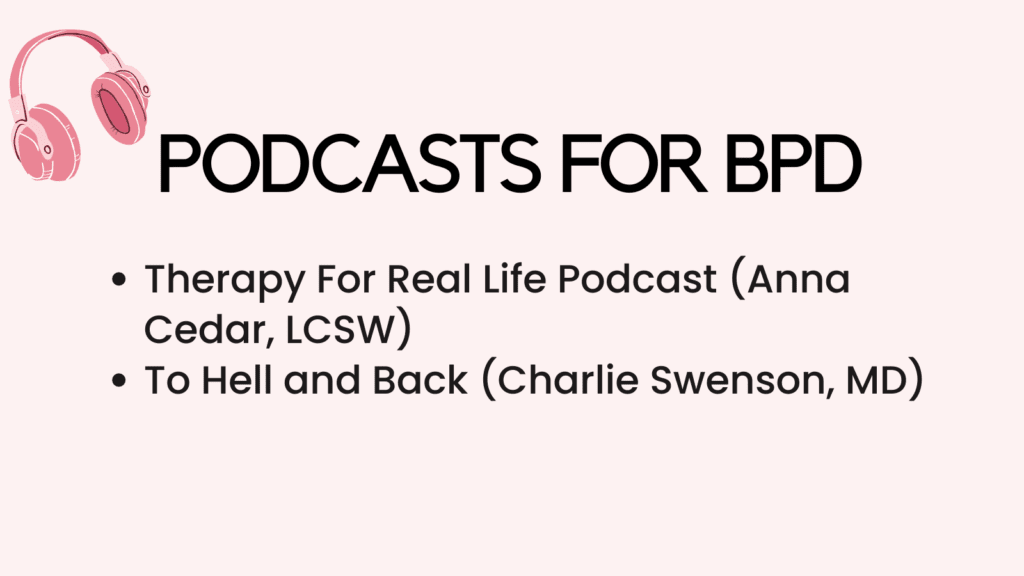Self-sabotage is one of the most painful — and confusing — patterns experienced by people with Borderline Personality Disorder (BPD). You may want love but push people away. You may crave success but quit right before things go well. You may feel desperate to be seen — and then hide or destroy the connection when it finally happens.
It’s not because you’re broken. It’s because you’re protecting yourself from pain in the only way your nervous system knows how. But self-sabotage doesn’t have to be the end of the story. It can be understood, softened, and changed.
What Self-Sabotage Looks Like in BPD
Self-sabotage in BPD can take many forms, often driven by fear, shame, and internalized trauma:
- Pushing away people who care about you
- Starting fights when things feel too close or good
- Quitting jobs, relationships, or projects without clear reason
- Engaging in risky behaviors (substance use, self-harm, reckless sex)
- Withdrawing, ghosting, or isolating during emotionally vulnerable times
- Avoiding therapy or intentionally skipping steps toward healing
What looks like “destruction” is usually a hidden attempt at emotional survival.
Why It Happens
1. Fear of Abandonment
Getting close feels dangerous — because if someone leaves after knowing the real you, the pain would be unbearable. So you leave first.
2. Deep Shame
You may feel fundamentally flawed. When good things happen, your brain says: This can’t last. You don’t deserve it. So you sabotage to “prove” the shame was right all along.
3. Black-and-White Thinking
With BPD, people and situations are often viewed in extremes. One mistake can make something or someone feel entirely bad, leading you to throw everything away impulsively.
4. Overwhelm
Success, intimacy, or even calmness can trigger dysregulation. It may feel too foreign — too quiet — so your body unconsciously creates chaos just to feel familiar.
5. Need for Control
Sabotaging gives a sense of control. If pain is inevitable, better to cause it than wait for it. This mindset can keep you locked in destructive patterns.
Related: Top 7 Skills For Coping With BPD [+ BPD FREE Resources]
How to Stop Self-Sabotage When You Have BPD?
1. Catch the Pattern Early
Before you can stop it, you have to recognize it. Self-sabotage often starts with emotional tension or an intrusive thought like:
- “I’m going to ruin this anyway.”
- “They’re going to leave — I’ll just push them away first.”
- “I don’t deserve this.”
Get curious about your patterns. What thoughts, sensations, or situations usually come right before you sabotage?
Start tracking your emotional triggers and behaviors — awareness is the first interrupt.
2. Name What You’re Really Feeling
Self-sabotage often masks more vulnerable emotions: fear, shame, guilt, or grief. Naming these feelings gives them somewhere to go besides destruction.
Ask yourself:
- Am I feeling scared, rejected, unworthy, or overwhelmed?
- What am I trying to avoid or protect myself from?
Saying the emotion out loud can defuse its control over your behavior.
Related: What Is Quiet Borderline Personality Disorder?
3. Use the 10-Minute Rule
When you feel the urge to blow something up — quit, lash out, disappear — delay action.
Tell yourself: “I’m going to wait 10 minutes before I do anything.”
During those 10 minutes:
- Breathe slowly and deeply
- Squeeze a cold object or splash cold water
- Write out what you’re feeling without judging it
Most urges shrink when you give your brain time to re-engage logic.
4. Create a “Ground Me” Plan
Build a go-to response plan for moments you feel impulsive:
- Three grounding tools (ice, music, walking barefoot, etc.)
- A mantra to repeat: “This feeling will pass. I don’t have to act on it.”
- One safe person to contact: A friend, therapist, or crisis line
Having this plan ready prevents your emotions from running the whole show.
5. Replace Destruction with Redirection
Your body often craves release — not actual damage. Swap harmful sabotage with healthy discharge:
- Journal every dark, raw thought uncensored
- Scream into a pillow or go for a hard run
- Destroy paper, not relationships
- Move your body: jumping jacks, shaking, dancing
You’re not avoiding the feeling — you’re helping it move through.
Related: Borderline Personality Disorder Support Group
6. Use DBT Skills Daily
Dialectical Behavior Therapy (DBT) is made for this. Practice skills like:
- TIPP (Temperature, Intense exercise, Paced breathing, Progressive muscle relaxation)
- Opposite Action (do the opposite of what the urge wants)
- Wise Mind (balance between Emotion Mind and Reasonable Mind)
These tools regulate your nervous system and help you respond with intention, not impulse.
7. Talk to Yourself Like Someone You Love
Shame feeds sabotage. Start speaking to yourself with kindness — especially when you mess up.
Instead of: “I ruin everything.”
Say: “I got overwhelmed. But I can still choose healing now.”
Reparenting your inner self helps create emotional safety — which makes sabotage less necessary.
8. Build Tolerance for Stability
Sometimes, peace feels unfamiliar. You may unconsciously sabotage calm or success because it feels foreign — even unsafe.
Start saying to yourself:
- “It’s okay to feel good.”
- “I don’t have to earn calm through crisis.”
- “I deserve connection, even if it feels scary.”
The more you allow peace in small doses, the more your nervous system learns it’s safe.
9. Repair Instead of Retreat
If you do sabotage — end a friendship, lash out, ghost someone — don’t disappear into shame.
Ask:
- What triggered me?
- How can I repair this with the other person — or with myself?
- What do I need to handle it differently next time?
You don’t need to be perfect. You just need to be willing to try again.
10. Work With a Trauma-Informed Therapist
Self-sabotage is often rooted in early wounds: rejection, neglect, or emotional invalidation. A therapist trained in BPD and trauma can help you:
- Unpack where the patterns began
- Build emotional regulation skills
- Learn to feel safe with yourself — and others
You don’t have to fight this alone.
Related: Borderline Personality Disorder (BPD) Resources (Information, APPS, Podcasts, TED Talks, Books)

Conclusion
Self-sabotage in BPD is not a character flaw — it’s a coping strategy that once protected you from unbearable pain. But now, it may be hurting the very things you want: love, peace, stability, connection. The good news? Every moment is a chance to do something different.
You’re not broken — you’re learning. And every time you pause, reflect, and try again, you’re choosing healing over harm. One small step at a time.



![BPD Support Groups [Online & In-Person]](https://ineffableliving.com/wp-content/uploads/2022/09/Borderline-Personality-Disorder-Support-Group-1024x576.png)